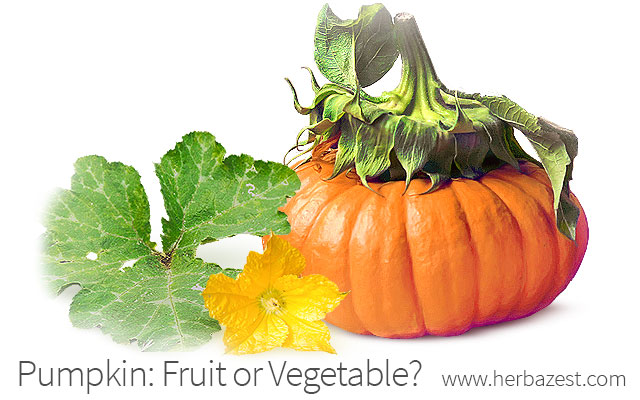Learning how best to classify certain foods can already be highly nuanced, but even more so when it comes to determining if the pumpkin is a fruit or a vegetable. Because of its relatively low sugar content, common belief maintains that pumpkin is a vegetable. Moreover, some people have a tendency to classify pumpkin as one or the other according to its function within a particular recipe. The truth is that, botanically, pumpkin is a fruit - albeit a rather confusing one.
Characteristics of Fruits and Vegetables
The presence or absence of seeds is the true difference between fruits and vegetables. The edible, matured ovaries of flowering plants are called “fruits.” In many plants, like pumpkin, the ovaries enlarge and produce new seeds after fertilization.
Vegetables, for their part, refer to any of the edible portions of an herbaceous plant crop, such as its leaves, stems, flowers, bulbs, and roots; for example, spinach is considered a leafy vegetable, while broccoli florets (flowers) and celery stalks are both examples of edible plant parts as well.
Pumpkin Is a Fruit
Like all other fruits, pumpkins produce seeds. The seeds of a pumpkin are large and flat. They are enclosed and protected by the pumpkin's hard, bulky, outer encasing and fleshy innards. In addition, the pumpkin fruit, or the ovaries, are responsible for the propagation of the plant's seeds.
Though thought to be right on the blurred line between fruit and vegetable, the pumpkin is comparable to tomatoes, cucumbers, eggplants and other seed-producing fruits that are commonly mistaken for vegetables.
Using Pumpkin for Sweet Dishes
Pumpkins are usually more representative of fruits when used in dessert recipes. Pumpkins are an excellent source of vitamin A, and there are many culinary uses for them, such as pies, breads, muffins, and cookies. Canned pumpkin has about 3.3 grams of sugar for every 100 g serving, and it can be easily whipped into baked recipes. The flesh of the pumpkin can also be used to create healthy pudding alternatives.
Using Pumpkin for Savory Dishes
Pumpkins are versatile enough to complement vegetables in some sides and entrees. For a savory dish, try boiling and mashing pumpkin to use in a hearty stew. The seeds can also be roasted and used on salads; they can provide about 18.5 g protein per 100 g serving - more than 10 times the protein of other typical salad ingredients, like lettuce and tomato.
Like many vegetables, pumpkins provide a very low amount of fat - only 0.07 grams per 100 g serving. Pair pumpkin with plant-based oils like extra virgin olive oil in order to enjoy a bit more healthy fat.
While commonly mistaken for a vegetable, because it produces seeds, botanically speaking, pumpkin is a fruit and may be used in a wide variety of both sweet and savory dishes.
Sources
- Missouri Botanical Garden, Gardening Help FAQs, Horticulture Questions and Answers
- University of California, Cooperative Extension, Vegetable research & information center
- University of Illinois, Extension Office, Pumpkins and More
- USDA Nutrient Database




